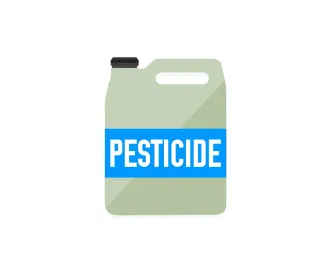In February 2023, the US Environmental Protection Agency (EPA)’s Office of Enforcement and Compliance Assurance (OECA) quietly released a Compliance Advisory “What You Need to Know about Producing, Distributing, or Selling Pesticide Devices.” The advisory follows on the heels of similar advisories and provides information to the regulated community about requirements for pesticide devices under the Federal Insecticide, Fungicide, and Rodenticide Act (FIFRA) in order to promote compliance. EPA issued this advisory in response to a “significant increase” in the number of pesticide devices being sold or distributed in the US in which EPA has found “substantial non-compliance” with FIFRA requirements. EPA has also experienced a high volume of inquiries from companies and other regulators seeking clarification about pesticide device requirements. The advisory suggests that EPA remains poised to continue taking enforcement actions against companies that import, distribute or sell pesticide devices that do not comply with FIFRA’s requirements.
While devices do not require registration under FIFRA as pesticides do, EPA reminds stakeholders that there are multiple other requirements under FIFRA and state laws applicable to devices that, if not complied with, can result in significant penalties or injunctive action. EPA explains in the advisory that it has seen an increase in the following types of non-compliance issues for devices:
-
products claiming to be devices that are, in fact, pesticides being sold/distributed without the required FIFRA registration;
-
devices bearing false or misleading statements on the label (which constitutes misbranding); and
-
devices sold/distributed that are not produced in EPA-registered establishments.
Recent examples of enforcement actions from EPA’s public administrative enforcement docket illustrate that the types of non-compliance issues described above are the most common types of pesticide device violations. The docket shows that in the past three months, EPA has refused admission of three companies’ imports because it considered their products—an ozone generator, an ozone water purification system and a UV lamp—to be devices under FIFRA, and they did not have FIFRA-compliant labeling. Also within this time period, EPA issued a stop sale, use or removal order (SSURO) for two types of water filter devices that did not bear EPA establishment numbers on the labels. And, EPA issued a consent order issuing penalties against a company for importing hundreds of air purifier pieces, HEPA filters and UV-C bulbs that did not have EPA establishment numbers on their labels, nor did the company file the required import notices for devices.
EPA clarifies in the advisory that a device is “an instrument or contrivance that is intended to destroy, repel, trap, or mitigate any pest, including but not limited to rodents, molds, viruses, and bacteria.” EPA has interpreted devices as working through physical or mechanical means (such as electricity, light or physical force) and provides examples such as water or air filters, ultraviolet light systems, ozone generators and sound generators, if these products are marketed with pesticidal claims. The distinction between a pesticide and pesticide device is not always clear, but EPA emphasizes its general guidance that if a device incorporates a substance or mixture of substances to perform its intended pesticidal purpose, then it is considered a pesticide, not a device, and would require FIFRA registration.
The advisory lists the following requirements applicable to devices:
-
FIFRA labeling (40 C.F.R. Part 156)—devices must have FIFRA compliant labels. Devices cannot be misbranded. A product may be considered misbranded if the label contains missing required elements (such as the EPA establishment number, directions for use or precautionary/warning statements) or bears any statement, design or representation that is false or misleading. The advisory provides several examples of when a product is considered misbranded, such as providing false or misleading efficacy claims that are not supported by efficacy test data or other substantiation. Although EPA does not review/approve of device labels prior to sale and distribution, EPA may still review labels during compliance monitoring or inspections. EPA reminds stakeholders that producers and sellers of devices are responsible for ensuring that devices perform as claimed and that performance claims are not false or misleading. Hunton Andrews Kurth LLP’s pesticide team has provided practical compliance tips for retailers selling pesticide devices, including reviewing product labels for EPA registration and/or establishment numbers, reviewing label claims and obtaining compliance assurances from suppliers.
-
Establishment registration and reporting (40 C.F.R. Part 167)—devices must be produced in an EPA-registered establishment, and the establishment must comply with reporting requirements.
-
Books and Records (40 C.F.R. Part 169)—device producers must maintain certain records and allow EPA and state regulators access to such records. Device producers are also subject to establishment inspection provisions in FIFRA Section 9.
-
Imports and exports (FIFRA Section 17, 19 C.F.R. 12.110-12.117)—devices must comply with import and export requirements, including the requirement for importers of devices to submit a Notice of Arrival of Pesticides and Devices (NOA) to the EPA regional office for the port of entry (which is then provided to US Customs and Border Protection) prior to arrival of the shipment into the United States.
-
Child-resistant packaging (FIFRA Section 25(c)(3), 40 C.F.R. Part 157)—devices are subject to FIFRA requirements for child-resistant packaging.
-
Violations, enforcement and penalties (FIFRA Sections 12, 13 and 14)—devices are subject to violations, enforcement and penalties under FIFRA.
-
State registration of pesticides—some states also regulate devices and may require registration.
The advisory also provides links to EPA’s resources for FIFRA device regulations and guidance, including the process for requesting regulatory determinations as to whether a product is a device, guidance on importing and exporting devices, requirements for registering pesticide establishments, procedures for submitting tips and complaints related to devices, pesticide regulatory consultants, and how to disclose potential violations under EPA’s Audit Policy.






 />i
/>i
